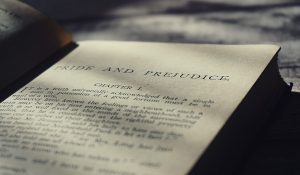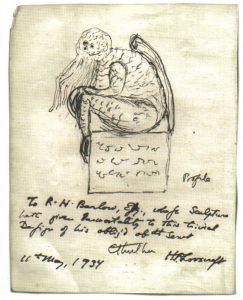|
Getting your Trinity Audio player ready...
|
Pride and Prejudice, a classic novel by Jane Austen, was written in 1813. It was published under an ancestor to modern copyright law in Great Britain called the Statute of Anne, that would have granted protection for up to 28 years. Similar to modern copyright laws, when protection under the Statue of Anne expired, works fell into the public domain. From the public domain, Pride and Prejudice could be transformed into Pride and Prejudice and Zombies a parody novel written by Seth Grahame-Smith in 2009 that was shortly thereafter made into a movie.

The Turning, a 2020 horror film, is a modern adaptation of Henry James’ 1898 novella The Turn of the Screw. As an American publication, The Turn of the Screw would have been protected for 28 years plus an optional 14-year renewal. At the very latest, copyright protected The Turn of the Screw until 1940 when it fell into the public domain.
Lovecraft Country, a new television series based on the book by Matt Ruff, incorporates material from several of H.P. Lovecraft’s books and stories, most or all of which have fallen into the public domain.

These are just a few examples of how material in the public domain can be used to create something new, whether a parody, an adaptation, or an exploration of the conjunction of horror fiction and historic racism. In theory, all art incorporates concepts, methods, techniques, and imagery from art that has gone before. The repetition of visual or written imagery from previous published works may be necessary to communicate meaning, allowing the artist to rely on shared experiences with their audience to elicit an emotional response to the imagery. Some might say that there is no true originality in art, as we are unable to escape the impact of the art and culture we consume while becoming artists. The appropriation art movement takes this idea to a more extreme level, specifically using existing imagery or other people’s art in a way that adds new or different meaning.
Copyright law, though it is written to allow for transformative uses that add new meaning, can sometimes hinder the process of creation by restricting how works can be used. This is one of the reasons why copyright protection has an expiration, allowing material to become public domain. The original intention of copyright law in the U.S. was to strike a balance between the creator’s interests and the interests of users who may also become creators. This is why, since 2019, the USF Libraries have been celebrating the public domain and the new material that falls into it by digitizing material from our collections. Join the USF Libraries in our celebration by checking out the newly public domain material from our collections that we have digitized for our celebration.
